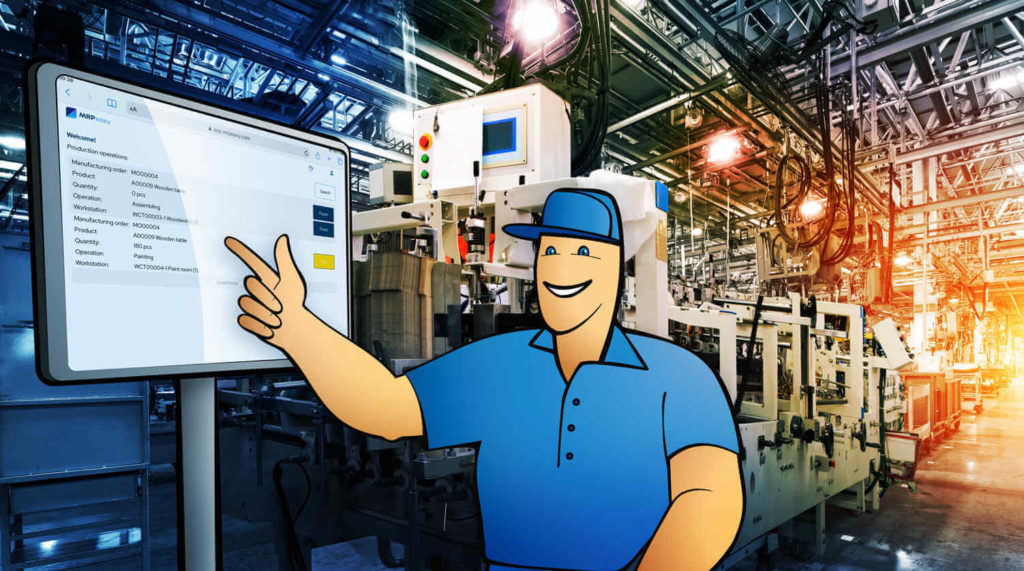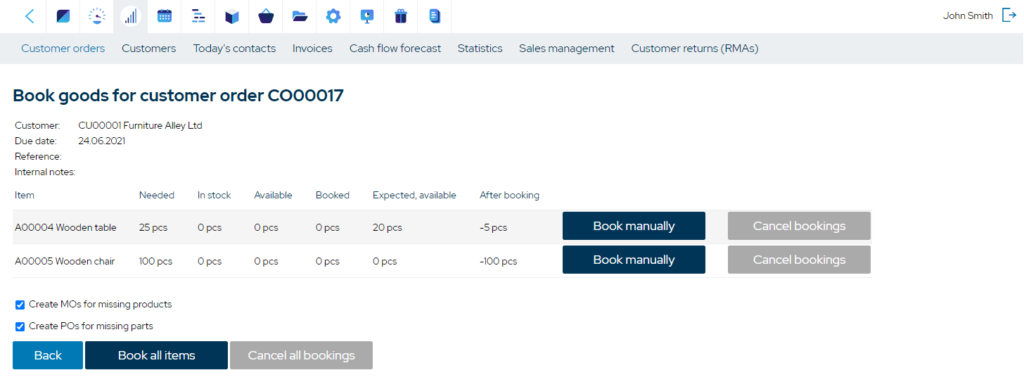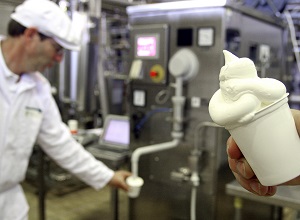Paperless Manufacturing – How to Build a Paperless Factory?
Paperless manufacturing means managing, coordinating, and reporting production activities purely with digital solutions. A paperless factory typically sees benefits such as the elimination of non-value-added tasks, better traceability, optimized production scheduling, shorter lead times, etc.

You can also listen to this article:
What is paperless manufacturing?
Paperless manufacturing is the management, coordination, and reporting of production activities without using paper documents as a communication medium. In paperless manufacturing, paper is replaced by a cloud-based manufacturing software that acts as a central information hub, providing real-time data to managers and line workers alike. Work orders, customer orders, and purchase orders are created, received, and managed digitally while every action related to the manufacturing process is recorded in the software. The paper trail required in some industries is therefore substituted with a largely automated digital trail.
Why build a paperless factory?
There are many benefits to manufacturing paperless. From waste reduction to time savings, paperless manufacturing can be a terrific help if you are trying to make your processes more efficient.
1. Elimination of non-value-added tasks
Gone are the days when managers had to sift through stacks of paper documents every day to get an overview of what was happening in the company. Using a manufacturing ERP system gives you the opportunity to see exactly what the current requirements are, which goods are in stock, and which are expected to arrive. By entering a customer order into the system, managers can automatically book the necessary goods, order missing materials, and schedule production activities according to resource and labor availability. Using a barcode system present in many ERP systems allows workers to quickly scan items instead of entering the data manually, thereby speeding up the receipt, picking, and dispatch of goods. As every department has instant access to real-time information pertaining to them, there is no need for collecting stacks of documents and manually drawing up reports.
2. Better traceability
Tracking stock lots and serial numbers and recording each inventory movement gives you the chance to know and prove which lot was used in a specific product, which supplier it came from, who has been handling it, and which customers received the finished goods related to the stock lot. This allows you to achieve regulatory compliance even in the strictest industries, trace inconsistencies back to their root causes, and easily organize product recalls when a batch of faulty goods is sent out to customers.
3. Optimized production scheduling
In an ERP/MRP system, production scheduling can be done automatically according to resource availability. Some software also allows you to choose either forward or backward scheduling, the latter of which is used to manufacture just-in-time. Customer orders can be turned into manufacturing orders and materials can be booked from stock with a click of a button while the system finds the optimal time for the manufacturing itself to take place.
4. Better reporting and KPI tracking
Apart from tracking inventory movements, the best ERP/MRP systems also allow for shop floor reporting, which helps companies track the time spent on production activities, thereby giving them accurate cycle times. With an inspection functionality, manufacturers can perform quality control on incoming and manufactured goods. Various supplier performance and sales metrics can also be tracked. This all is turned into useful statistics that could be utilized in the decision-making process. An accounting module can be used to automatically calculate the cost of goods sold, profit and loss, and other financial KPIs.
5. Shorter lead times
Using a built-in CRM system allows the users of a manufacturing ERP system to react quickly to customer requests. The readily available data regarding materials in stock and production capacity helps the software calculate accurate lead time estimates while also determining the production costs of an order in mere seconds. Adding to that the capability of ERP/MRP software to speed up the planning, purchasing, and other administrative phases of production, lead times can be significantly cut. Therefore, in highly competitive environments where agility counts, a paperless manufacturing company has a great advantage over those that still use paper-based methods to manage their business.
6. Less waste and scrap
Having real-time, always up-to-date information regarding your stock levels enables you to optimize your inventory so that there would be no excess that could go unused. Using the inventory optimization software built into your ERP/MRP system helps you organize your inventory, and prevent the misplacing and eventual obsolescence or expiry of your stock. The quality assurance features, including inspections and the possibility to trace back root causes of defects, can help make sure that materials coming from suppliers and the products that are manufactured are of high quality.
7. Less human error
Due to their manual nature, paper-based systems often incur data errors. While a couple of mistakes do not seem like a catastrophe, even small errors can easily compound into large ones that can eventually paralyze your company. The paperless manufacturing systems supported by well-developed ERP/MRP software can prevent these errors in any area they are implemented in.
8. Better communication
Using a manufacturing ERP system to manage your operation allows you to make sure that each employee has easy access to important data pertaining to their jobs. Within a cloud-based system, the updating and sharing of information takes place in real time, thereby ensuring that no one would use obsolete data. By automating workflows and providing a single source of truth, the ERP system eliminates communication gaps, reduces manual errors, and ensures that everyone is always on the same page. As a consequence, paperless manufacturing companies spend less time on emails and meetings and more time on substantive activities.
6 easy steps to paperless manufacturing
Historically, paperless manufacturing has been a pain to implement, with many attempts failing due to the inconvenience and high cost of legacy manufacturing software. However, some of today’s cloud-based ERP/MRP systems have been tailored specifically to the needs of small manufacturers with smaller budgets and scant IT knowledge. For example, most of MRPeasy users implement the software on their own, without any help from external consultants and implementation partners. Here are the steps you need to take to achieve paperless manufacturing in your facility.
1. Choose a software that fits the company
The software to support your paperless manufacturing company has to fill your business needs. That is why you should map out your problems and priorities, find the solutions that solve your issues and tick the most boxes, and rigorously use the free trials that many providers have available. Never start implementing a system without being absolutely sure that this is the solution for you.

2. Bring everyone on board
Next, it is necessary to communicate the change to everyone involved. First, the managers should be brought up to speed regarding the reasons for the transformation and the steps required. Then, the change should be explained to everyone from QA to line workers – anyone that would be affected by the change. Only when everyone is on board, can the building of a paperless factory begin.
3. Modify your processes to accommodate the software
With any paperless manufacturing system, it is smarter to conform to the processes of the software than trying to make the software conform to yours. Otherwise, you could be looking at constant expensive software customizations and creating unnecessary complexity that the software provider’s support team might not be able to solve. Manufacturing software is developed precisely for maximum efficiency and if you want to achieve it, follow the software use guidelines.
4. Enter accurate data
The concept of “garbage in, garbage out” or GIGO specifies that a system is only as good as the inputs fed into it. That means you must be very diligent with the information you give the software both while implementing the system and when using it. Rather than being a magic solution that could correct errors, software is a tool that could be used to prevent them. If you feed the system accurate information, it uses the data to generate further accurate information that can significantly improve the efficiency and financial health of your company.
5. Make sure everyone is using the software
When a software is implemented but some workers decide not to use it, you can never realize the full potential of it. To maximize the benefits of paperless manufacturing, make sure that everyone, from managers to line workers, is conforming to the new processes. That means recording every action and inventory movement in the software, using the MRP functionality to calculate and forecast requirements, scheduling production activities in the software, etc. Of course, not all employees should have access to the whole software and that is why many providers allow you to set specific permissions. For example, line workers should only be given access to their personal production plan and to the production reporting module.
6. Review periodically
As with any employee or piece of equipment, you should periodically review the performance of your paperless manufacturing companion. To do this, you should set some KPIs that are directly affected by the software. These may include inventory turnover, quoting accuracy, forecasting accuracy, scheduling accuracy, or simply employee satisfaction.
Key takeaways
- Paperless manufacturing is the management and coordination of production activities without using paper documents as a communication medium.
- In paperless manufacturing, paper is replaced by a cloud-based manufacturing software that acts as a central information hub, providing real-time data to managers and line workers alike.
- The benefits of paperless manufacturing are the elimination of non-value-added tasks, better traceability, optimized production scheduling, better reporting and KPI tracking, shorter lead times, less waste and scrap, and reduction of human error.
- For paperless manufacturing to work, it is imperative to choose the right ERP/MRP system, properly implement it, and see to it that each required party would use it.
You may also like: Change Management in Manufacturing – Implementing an ERP System




